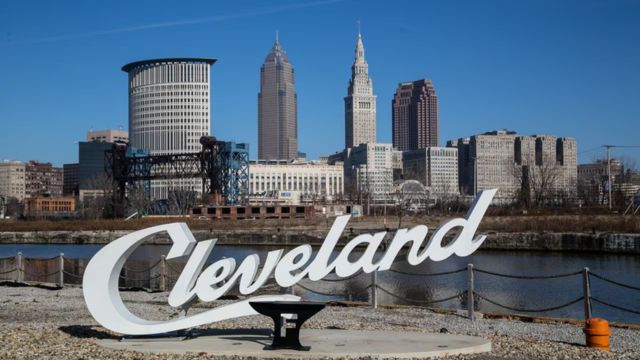This City Has Been Named the Poorest City in Cleveland, Ohio
Cleveland, Ohio, a city with a rich cultural history, is nonetheless facing issues of poverty in a number of its districts. Cleveland’s poverty rate has to be reduced through a multifaceted strategy that includes community-driven projects, regulatory changes, and focused interventions. Residents can be uplifted and a more equal city can be created for all by addressing important issues together.
At different points in time, neighborhoods like Hough, Central, Kinsman, Glenville, St. Clair-Superior, and others have dealt with issues related to poverty, unemployment, resource scarcity, and infrastructure.
Top 5 the Poorest City in Cleveland, Ohio
1. Hough
Hough, a neighborhood northeast of Cleveland, has seen problems with unemployment, poverty, and poor access to resources for its citizens.
2. Central
Located in the center of Cleveland, the Central neighborhood has struggled with difficulties like high rates of poverty, little access to employment options, and problems with housing and infrastructure.
3. Kinsman

Located in Cleveland’s southeast, Kinsman has seen economic downturns that have resulted in high rates of unemployment, poverty, and limited access to basic amenities.
4. Glenville
East of Cleveland is the city of Glenville, which has struggled economically due to issues with poverty, crime, and poor resources and infrastructure for its citizens.
5. St. Clair-Superior
Northeast of Cleveland, St. Clair-Superior has experienced economic hardships including destitution, joblessness, and problems with housing and community improvement.
Even while some places could experience economic difficulties, they still have thriving communities striving for advancement and constructive change. To improve these areas and all Clevelanders’ futures, cooperative activities that focus on infrastructure development, job creation, and the provision of basic services are vital.
How to Overcome the Poverty Rate in Cleveland, Ohio
Cleveland is a city in the state of Ohio. Even though Cleveland has experienced poverty in some areas, identifying Cleveland as the “poorest city” may not adequately capture the city’s diverse socioeconomic environment.
1. Economic Opportunities and Job Development
Encouraging the development of jobs by making investments in a range of sectors, including technology, healthcare, and renewable energy, can increase employment opportunities.
Programs for workforce development that are adapted to the needs of the community and provide training and skill development can help close the gap between job searchers and opportunities.
2. Education and Skill Development
From early childhood to higher education, it is imperative to make quality educational investments. Encouraging programs that improve access to education, career training, and digital literacy equips people with the skills employers need to compete in the changing labor market.
3. Affordable Housing and Neighborhood Revitalization

Restoring abandoned buildings and addressing the shortage of affordable housing alternatives can help to stabilize neighborhoods. Affordable housing, mixed-income housing developments, and neighborhood rehabilitation initiatives can reduce homelessness and offer stable living conditions.
4. Access to Social Services and Healthcare
It is imperative to guarantee fair and equal access to social support networks and healthcare services. It is possible to improve vulnerable populations and lessen financial burdens by extending social welfare programs, mental health services, and healthcare coverage.
5. Encouragement of Small Businesses and Entrepreneurship
Promoting an atmosphere that is favorable to small enterprises and entrepreneurs propels economic expansion. By offering tools, financial support, and mentoring, one can promote local entrepreneurship, resulting in job creation and an increase in local economies.
6. Infrastructure Investment and transportation reach
Improving underprivileged neighborhoods’ infrastructure—including dependable public transit and community centers—improves connections and makes key services easier to reach, which promotes economic growth.
7. Community Empowerment and Engagement
Fostering sustainability and ownership among communities is achieved through involving them in participatory decision-making procedures. Enhancing collaborations among local government, nonprofit organizations, and citizens promotes cooperative problem-solving and guarantees that projects are in line with community demands.
8. Public Safety and Crime Prevention
Promoting public safety and putting policies into place to prevent crime together fosters an atmosphere that is favorable to economic expansion. Encouraging community policing and rehabilitation initiatives contributes to the creation of safer communities.
9. Policy Reforms and Advocacy
Advocating for policy reforms that tackle systemic disparities and provide support to marginalized populations is of utmost importance. Policymakers and advocates must work together to provide fair salaries, accessible healthcare, and equal access to resources.
Conclusion
Cleveland’s poverty must be addressed with a comprehensive and well-coordinated strategy. Government agencies, neighborhood associations, and citizens must work together to develop lasting solutions and promote a vibrant, inclusive city for all Clevelanders. By giving these tactics top priority, a path for lowering poverty rates and creating a more resilient and prosperous community can be established.
In Cleveland’s various communities, cooperative activities involving locals and outside stakeholders are essential to reducing poverty, enhancing living conditions, and promoting inclusive development.
